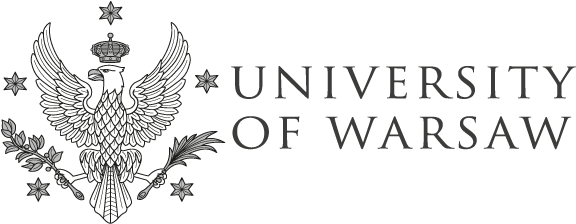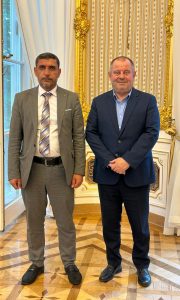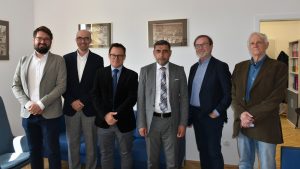The University of Warsaw was visited by Dr Anas Haj Zeidan, Director of the Syrian Directorate-General of Antiquities and Museums. During the visit, meetings were held with, among others, Rector Prof. Alojzy Z. Nowak, Chancellor Robert Grey and the representatives of the Polish Centre of Mediterranean Archaeology of the University of Warsaw. Dr Zeidan visited Poland at the invitation of Prof. Artur Obłuski.
This is the first visit to Poland by a representative of the Syrian authorities responsible for antiquities since the outbreak of civil war in Syria in 2011. It was organised on the initiative of Prof. Artur Obłuski, director of the Polish Centre of Mediterranean Archaeology (PCMA) of the University of Warsaw.
During his visit to the University of Warsaw, Dr Anas Haj Zeidan met, among others, Prof. Alojzy Nowak, the UW Rector, and Robert Grey, the UW Chancellor, as well as the representatives of the PCMA, including Prof. Grzegorz Majcherk, head of the PCMA expedition in Palmyra.
Dr Zeidan also visited the University of Warsaw campus, Warsaw’s Old Town, the Academy of Fine Arts, the National Museum in Warsaw and the National Institute of Cultural Heritage of Poland.
Dr Zeidan’s visit to Poland, which lasted from 18th to 21st May, was preceded by a trip by a delegation from the PCMA to Syria in March this year, organised in cooperation with the Polish Embassy in Damascus. During this visit, which was led by Prof. Obłuski, discussions were held with representatives of the DGAM, including on the subject of Palmyra, a UNESCO World Heritage Site devastated by war and extremism.
Research in Palmyra
The PCMA UW’s links with Palmyra date back to 1959. Since then, a Polish archaeological expedition operated there annually until the spring of 2011, when unrest began in Syria. The important position of this site in the history of PCMA UW’s research is underlined by the fact that the Palmyrene lion relief discovered by this expedition became part of the institution’s logotype in 2017. Prior to 2011, PCMA UW also conducted research at other important archaeological sites in Syria, such as Tell Qaramel (a settlement from the Neolithic period), Tell Arbid (a Bronze and Iron Age city) and Hawarte (a mitreum from the Roman and Byzantine periods). Polish scientists also took part in salvage excavations on floodplains in connection with the construction of river dams.
“During our meetings with Dr. Zeidan, we outlined the priorities for our cooperation and discussed the first steps toward their implementation. The plans primarily concern conservation activities and training programs for Syrian specialists,” – explains Prof. Obłuski. He emphasizes that both sides expressed a willingness to strengthen and deepen the collaboration, including through the exchange of researchers and students.
These discussions emphasized the importance of coordinated efforts across disciplines and institutions for supporting the recovery and preservation of Syria’s heritage.




